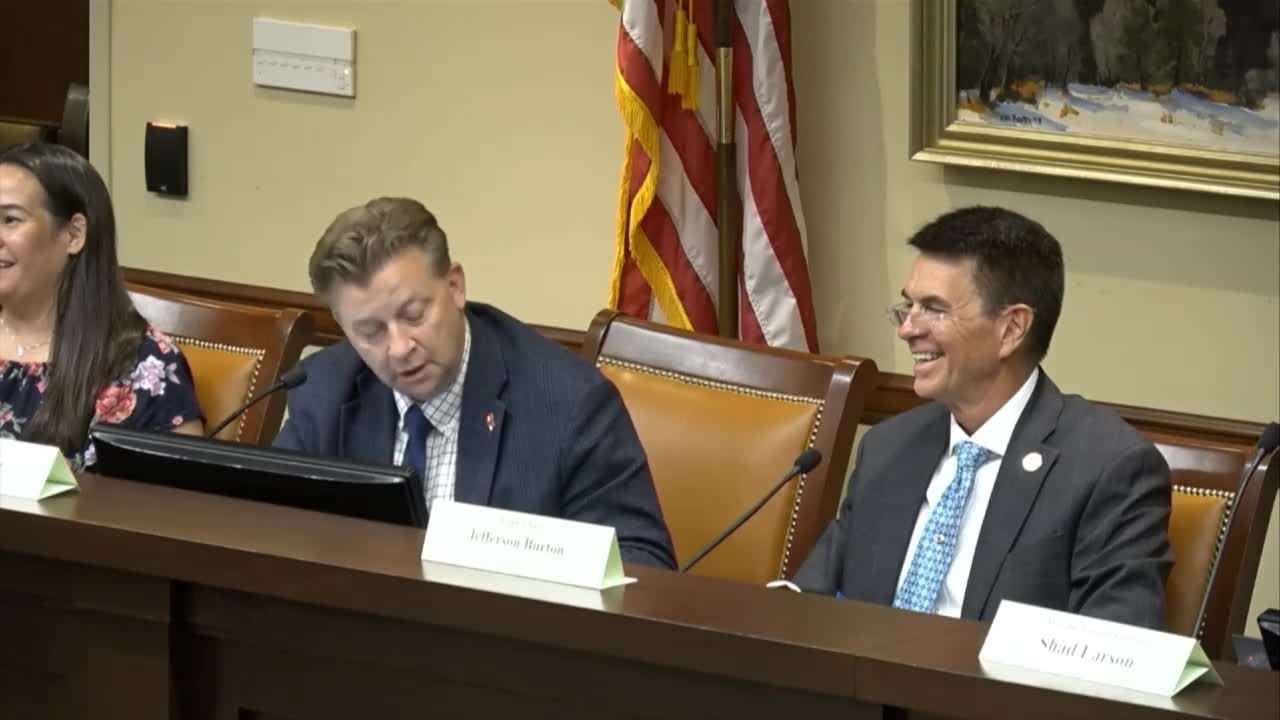Great Salt Lake gains federal designation to boost resilience
August 20, 2024 | Utah Interim, Utah Legislative Branch, Utah

This article was created by AI summarizing key points discussed. AI makes mistakes, so for full details and context, please refer to the video of the full meeting. Please report any errors so we can fix them. Report an error »

In a recent government meeting, officials discussed the establishment of the Great Salt Lake Sentinel Landscape, a significant federal designation aimed at enhancing the resilience of military installations and the surrounding ecosystems. General Tyler Smith, a key figure in the initiative, outlined the collaborative framework that includes partnerships among the Department of Defense, the Department of Agriculture, and the Department of Interior.
The Sentinel Landscape encompasses critical military sites such as Hill Air Force Base and Camp Williams, and aims to address the pressing environmental challenges posed by the shrinking Great Salt Lake. Smith emphasized the interconnectedness of military readiness, community health, and environmental sustainability, stating that a resilient military installation cannot exist without a resilient community and ecosystem.
The designation, received in March, is expected to facilitate priority funding for conservation projects and improve resource sharing among various stakeholders. Smith noted that the boundaries of the landscape were carefully drawn to focus on areas with the highest project potential, particularly around the migratory bird refuge and tributaries of the Bear River.
Concerns were raised by Representative Binion regarding the exclusion of the northern arm of the lake from the landscape. Smith explained that the initial proposal was deemed too expansive, leading to a more focused approach that could potentially evolve over time as project needs arise.
The meeting concluded with a call for continued collaboration and proactive measures to protect the Great Salt Lake, highlighting the urgency of addressing water issues in Utah as climate change impacts become increasingly evident. The officials expressed optimism about the future of the Sentinel Landscape and its role in safeguarding both military operations and the vital ecosystem of the Great Salt Lake.
The Sentinel Landscape encompasses critical military sites such as Hill Air Force Base and Camp Williams, and aims to address the pressing environmental challenges posed by the shrinking Great Salt Lake. Smith emphasized the interconnectedness of military readiness, community health, and environmental sustainability, stating that a resilient military installation cannot exist without a resilient community and ecosystem.
The designation, received in March, is expected to facilitate priority funding for conservation projects and improve resource sharing among various stakeholders. Smith noted that the boundaries of the landscape were carefully drawn to focus on areas with the highest project potential, particularly around the migratory bird refuge and tributaries of the Bear River.
Concerns were raised by Representative Binion regarding the exclusion of the northern arm of the lake from the landscape. Smith explained that the initial proposal was deemed too expansive, leading to a more focused approach that could potentially evolve over time as project needs arise.
The meeting concluded with a call for continued collaboration and proactive measures to protect the Great Salt Lake, highlighting the urgency of addressing water issues in Utah as climate change impacts become increasingly evident. The officials expressed optimism about the future of the Sentinel Landscape and its role in safeguarding both military operations and the vital ecosystem of the Great Salt Lake.
View full meeting
This article is based on a recent meeting—watch the full video and explore the complete transcript for deeper insights into the discussion.
View full meeting

